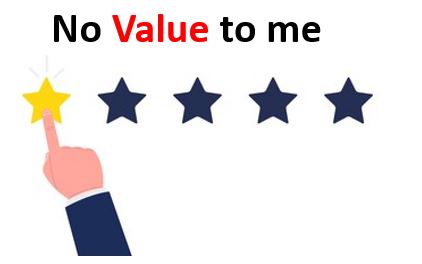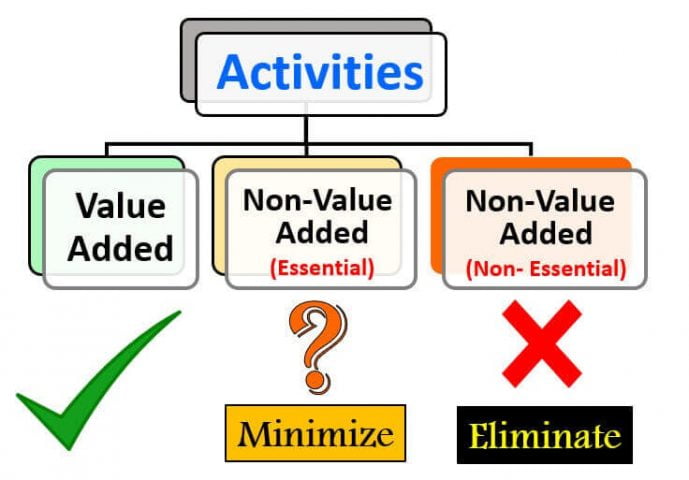In today’s rapidly evolving business landscape, organizations are continuously seeking ways to enhance their efficiency, optimize processes, and ultimately, deliver better products or services to their customers. A fundamental aspect of achieving these goals is understanding the concept of value and differentiating between value-added and non-value-added activities. This article aims to provide a comprehensive understanding of value and its implications, as well as the examples and differences between value-added and non-value-added activities. Furthermore, we will explore how to calculate value added and non-value-added activities through practical examples.
What is Value? Define Value and Value Proposition ?
Value, in a business context, refers to the perceived benefits that customers receive from a product, service, or business process. It represents what customers are willing to pay for, highlighting the importance of meeting their needs, wants, and expectations. The concept of value is at the core of every successful business, as it determines the viability and competitiveness of a product or service in the market.
The value proposition, on the other hand, is a clear statement that outlines the unique value a product or service provides to its customers. It answers the critical question of why customers should choose a particular offering over competitors. A well-crafted value proposition effectively communicates the benefits and advantages customers will gain by choosing the product or service, thus playing a pivotal role in attracting and retaining customers.
Value-Added and Non-Value-Added Activities Examples
Lets us first understand the difference between Value and Non-Value? The main difference between value and non-value lies in their impact on the end product or service and the satisfaction of the customer. Value-added activities directly contribute to improving the product or service, aligning with customer needs and enhancing the overall experience. In contrast, non-value-added activities do not add any value to the end product or service, leading to wasted resources and increased costs. To gain a clearer understanding, let’s explore examples of value-added and non-value-added activities in various industries:
a. Manufacturing Industry:
Value-Added Activity: Assembling components to create a finished product.
Non-Value-Added Activity: Waiting time between production stages due to inefficient production planning.
b. Service Industry:
Value-Added Activity: Providing personalized financial advice to clients based on their specific needs and financial goals.
Non-Value-Added Activity: Excessive data entry and paperwork that does not directly contribute to the client’s financial plan.
c. Software Development:
Value-Added Activity: Developing new features that enhance the usability and functionality of a software application.
Non-Value-Added Activity: Endless meetings with no clear agenda or outcome, wasting time without advancing the project.
Value Added vs. Non Value Added
When we look at the process, we normally look at each and every step an action or decision within the process to figure out if it is adding any value to the process or it does not add any value. So we will always defined in the eyes of customer.
To determine if it is adding value or not, we use 3C’s techniques.
1st C is Customer: It is what CUSTOMER is willing to pay. If your customer is not willing to pay, then ask yourself, why are you doing this process step or activity.
2nd C is Change : does it CHANGE the final product or service. Every step in process should add some value to your product or service. If not, then you are simply passing on the product or service to next operations without adding any value.
3rd C is Correct : Every time you do perform a particular action, or any process step it can be considered value-added only if results in producing non defective items. If you repeat some steps multiple time, then you are basically reworking the product or service which is not adding value.
So either the process steps add value or it does not add any value. As you are already aware that if you want to run a successful venture or business, then you need to focus on more on adding value in all your activities either personal or professional, but approximately 95% of all the activities we do don’t add any value in the eye of user or end customer.

Before we jump to what is Value add and what is not value add, lets first understand the meaning of “Value” in simple terms.
Value is something for which customer is willing to pay or spend money
Customer is least interested in 95% of all the activities that we do behind the scene and only 5% of all the activities are worth it in the eyes of customer.

Are Customers willing to pay for this ????
Generally, we classify all the activities as :
- Value added
- Non-Value added (Essential Activities)
- Non-Value added (Non-Essential Activities)

Let’s look at each one by one with some relevant examples :
- Value added activities : Those activities which increase the final worth or add value to the a product or services from the customer’s perspective. These are those activities for which customer is paying you
- Non Value added activities (Essential) : Those activities which will not add any value to a product or service and also these activities are essential or necessary from but customer is not willing to pay for these activities. Somehow you cannot avoid them as well They are kind of mandatory activities that we perform. Examples could be your HR activities, Purchasing Orders, Compliance related activities, R&D testing and Inspection of parts or Maintaining Quality system. They are generally required by business requirements or law or government regulations.
- Non Value added activities (Non Essential): Those activities which will not add any value to a product or service and also these activities are those which cannot be eliminated. They add no value to the product or service and also are not required for business operational reasons and must be eliminated immediately. We normally classify non value added activities with acronym DOWNTIME which are the deadliest lean wastes.

- D Stands for Defect – Products or services which fails to meet the customer expectations.
- O stands for Overproduction – Producing more than desired by customer.
- W stands for Waiting occur when someone in downstream or upstream is waiting for next action in the process.
- N stands for Non-utilized talent – Not 100% utilizing the talent.
- T stands for Transportation – Unnecessary transportation from one Point to another without adding any value
- I stands for Inventory – which includes ( Raw material, work in process or Finish goods )
- M stands for Motion – Unnecessary movement of people
- E stands for Excess Processing – Adding more steps or enhancements than required by customers.
By identifying and differentiating between these two types of activities, businesses can streamline their operations, optimize resource utilization, and enhance customer satisfaction.
These are all non-value-added operations.
Some of the examples includes : Rework activities, Delay in start of any operations, Unnecessary movement of equipment and people.
How to Calculate Value Added and Non Value Added Activities :

John wants to visit the bank for cash transactions and there is a huge Que in front of Bank. He steps out of car and stand in Que and waits for his turn to get in to the bank.
Let’s arrange the activities right from start to end.
Drive to Bank from Home will take 30 mins, then John needs in que for 20 mins and then fill up forms which will take another 15 mins. Finally, John compeletes the transactions in 5 mins and the drive back Home in 30 mins.

Now lets look at all the process steps and analyze what is value add and what is not value added activities ? Out of all the above activities only completing transactionsn is Value added which is 5 mins and rest all are Non-value added (95 mins).
Watch this animated YouTube video with Example for better understanding :
Conclusion
In conclusion, understanding the difference between value-added and non-value-added activities is essential for businesses seeking to thrive in a competitive marketplace. Value-added activities directly contribute to improving the end product or service, aligning with customer needs and enhancing their experience. In contrast, non-value-added activities do not add value to the final output, leading to inefficiencies and wasted resources.
By identifying and eliminating non-value-added activities, businesses can optimize their processes, improve efficiency, and allocate resources more effectively. This focus on value-added activities ultimately leads to enhanced customer satisfaction, increased competitiveness, and sustainable growth in the long run. Embracing a culture of continuous improvement and value optimization is the key to success in today’s dynamic business landscape.
I hope this blog helped in understanding the basic concept in a simplified manner, watch out for more such stuff in the future.
📢📢 𝑺𝒐𝒄𝒊𝒂𝒍 𝑴𝒆𝒅𝒊𝒂 𝑳𝒊𝒏𝒌:
Thanks!!!
For questions please leave them in the comment box below and I’ll do my best to get back to those in a timely fashion. And remember to subscribe to Digital eLearning YouTube channel to have our latest videos sent to you while you sleep.
✍️ 𝓓𝓲𝓼𝓬𝓵𝓪𝓲𝓶𝓮𝓻: Copyright Disclaimer under section 107 of the Copyright Act of 1976, allowance is made for “fair use” for purposes such as criticism, comment, news reporting, teaching, scholarship, education and research. Fair use is a use permitted by copyright statute that might otherwise be infringing. The information contained in this video is just for educational and informational purposes only and does not have any intention to mislead or violate Google and YouTube community guidelines or policy. I respect and follow all terms & conditions of Google & YouTube.





